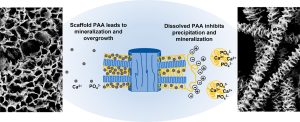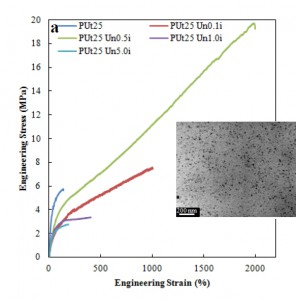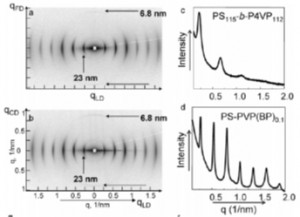1. Polymer Crystal Engineering and Polymer Crystallization
Crystalline polymers have been extensively studied over the past six decades and are commonly used as commodity materials, significantly impacting our daily lives. By utilizing controlled polymer crystallization, we design and grow functional polymer crystals for various applications, including drug delivery, surface modification, smart nanocomposites, etc..
Polymer Crystalsomes and Polymeric Nanoparticles: Crystallization is governed by translational symmetry, but at a nanoscale curved interface, crystalline packing can be disrupted due to the curved geometry’s incompatibility with conventional three-dimensional translational symmetry. By utilizing a nanoemulsion crystallization method or molecularly engineering the crystallization systems, we have created a library of nanosized polymer single crystal-like capsules, called crystalsomes. These crystalsomes exhibit broken translational symmetry and show great promise for cargo encapsulation and drug delivery applications.
Related publications: Nat. Commun. 2016, 7, 10599. Nat. Commun. 2018, 9, 3005. Nat. Commun. 2020, 11, 2152. Angew. Chem. Int. Ed. 2023, 62, e202217267.
Functional polymer single crystals: To further investigate the interplay between polymer single crystals and low-dimensional solids, we use polymer single crystals as nanoscale functional materials. This nanohybrid structure enables a wide range of applications for polymer single crystals, including use as molecular shuttles, in surface-enhanced Raman spectroscopy, and for Janus nanoparticle synthesis.
Related publications: Adv. Mater.2005, 17: 1198. JACS 2006, 128, 1692. Macromolecules, 2008, 41, 9516. Nature Nanotech., 2009, 4, 358.
Related publications: JACS, 2007 129, 12. JACS2008 129, 11594. ACS Nano, 2013, 7, 5192-5198. Angew. Chem. Int. Ed. 2017, 56, 13645. Angew. Chem. Int. Ed. 2017, 57, 15758.
2. Solid Polymer Electrolytes (SPEs) for Energy Storage
While considerable efforts have been devoted to studying SPEs and synthesizing numerous polymer electrolytes, most research has concentrated on enhancing their ionic conductivity and mechanical properties. However, the overall performance of SPE-based all-solid-state lithium batteries still requires substantial improvement. Our group has systematically investigated the structure and properties of various network polymer electrolyte systems to further enhance SPE performance in complete lithium battery devices.
Related publications: Nano Lett.2012, 2, 310. Macromolecules 2014, 47, 3978-3986. Macromolecules 2015,48, 4503–4510. Adv. Mater. 2015, 27, 5995–6001. Adv Energy Mater. 2018, 8, 1801885. Nano Lett. 2020, 20, 6914–6921.
3. Biomimicry and Biomaterials
The orientation and spatial distribution of nanocrystals in the organic matrix are two distinctive structural characteristics associated with natural bone. Synthetic soft materials have been used to successfully control the orientation of mineral crystals. The spatial distribution of minerals in a synthetic scaffold, however, has yet to be reproduced in a biomimetic manner. We use block copolymer-decorated polymer nanofibers to achieve biomineralized fibrils with precise control of both mineral crystal orientation and spatial distribution. Exquisite nanoscale structural control in biomimetic hybrid materials has been demonstrated.
Related publications: Macromolecules 2008, 41: 9516. Macromolecules 2010, 43: 9918. ACS Nano, 2013, 7, 8251-8257.
4. Sustainable Polymer Nanocomposites.
Polylactic acid, polyurethane, and cellulose nanocrystals, silica nanoparticles, and POSS have been incorporated into polymer nanocomposites using ins-situ polymerization and blending methods.
Related publications: Polymer2006, 47: 1678. Polymer2010, 51: 2191. Polym. Degr. Stab.2012, 97, 192. Macromolecules2012, 45, 993.
5. Liquid Crystalline Block Copolymers
Hierarchical nanostructures are constructed using liquid crystalline block copolymers. Subtle competition between liquid crystalline order and block copolymer order have been studied by combining small angle X-ray and transmission electron microscopy.
Related publications: Macromolecules2004, 37: 2854. J. Am. Chem. Soc.2005, 127: 15481. Macromolecules2006, 39: 517. Macromolecules2007, 40: 840. Macromolecules2007, 40: 5095. Soft Matter2008, 4: 458. Macromolecules2009, 42: 3510. Polymer2010,51: 3693.






